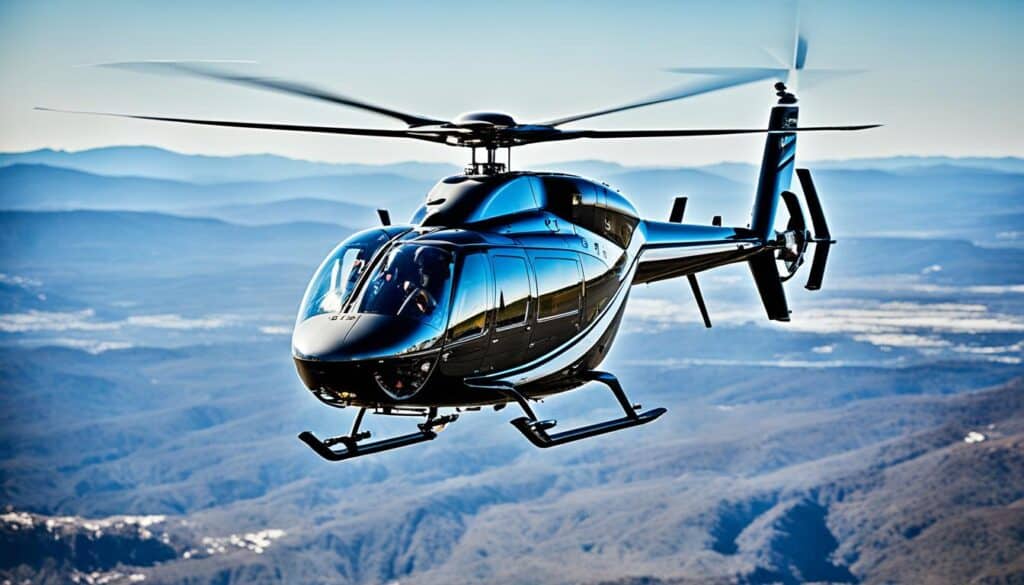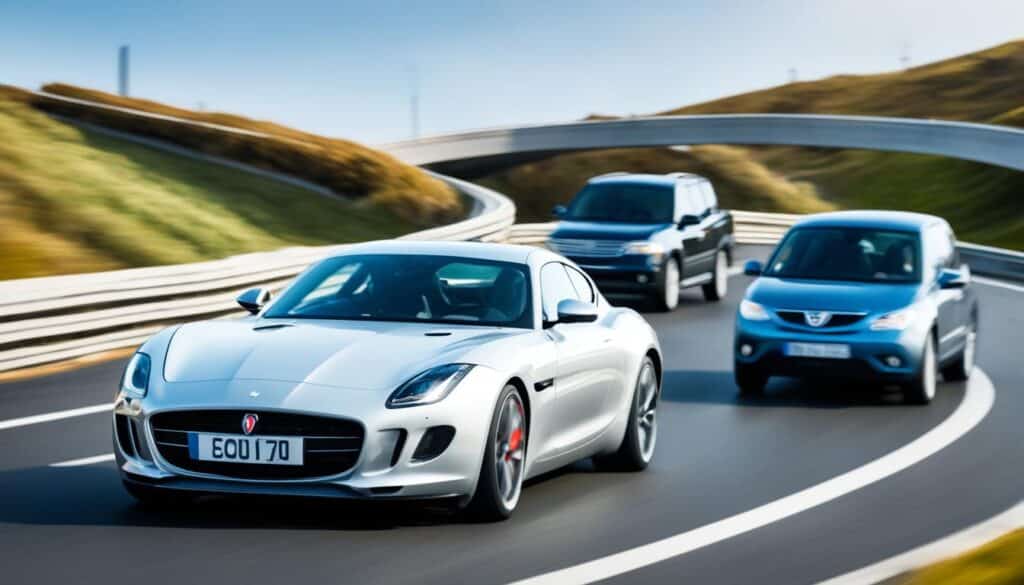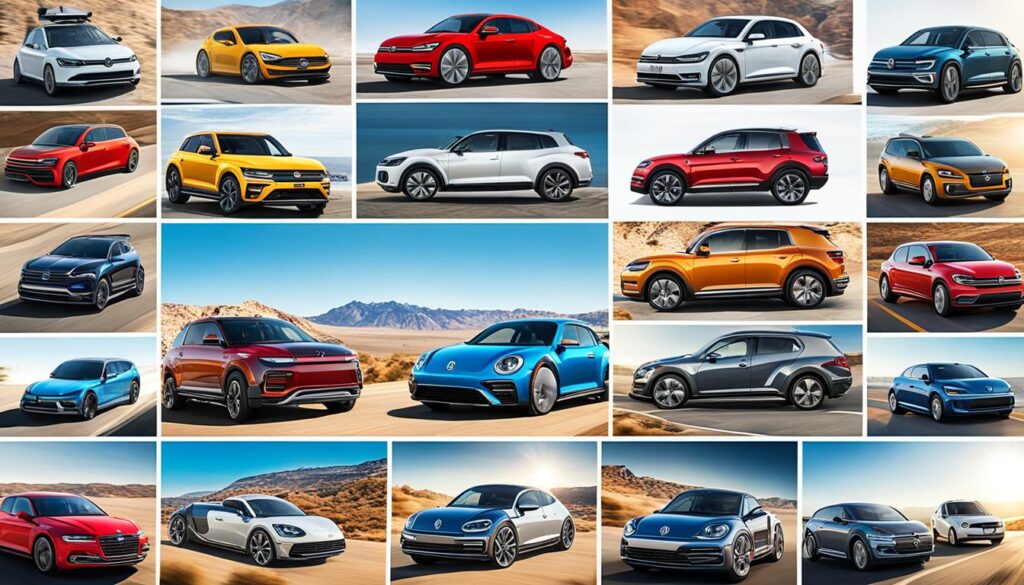Have you ever thought about the many kinds of vehicles we have? There are everything from fast cars to sturdy trucks that can carry big loads. You might love the excitement of a motorcycle, or perhaps an SUV fits your family’s needs. The range is vast. Let’s dive into why and how each type of vehicle suits different lifestyles.
Key Takeaways
- Vehicles come in different shapes and sizes, serving specific needs. From small cars to big trucks, there’s something for everyone.
- Knowing the unique features of motorcycles versus buses or SUVs aids in smart buying decisions.
- Special vehicles, like RVs and hybrids, address specific wants, like eco-friendliness or outdoor adventures.
- Learning about vehicle terms helps in better discussions and understanding the car world.
- Vehicle variety shows how our changing needs inspire new technologies and choices.
Introduction to Vehicle Types
Being an explorer, I’ve seen many vehicle types on land, sea, and in the sky. Each transportation mode has special benefits and thrills. They help us move, bring goods, or just enjoy traveling.
On the road, we mostly use land vehicles. These include fancy cars, tough trucks, and big buses. They are key to everyday life, making our trips easy.
But the world of vehicle types is much broader than roads.
Adventurers love water vehicles. They range from small boats to grand yachts. They let us see the beauty under the world’s oceans, rivers, and lakes.
Then there are air vehicles. These marvels fly in the sky. Whether it’s planes or helicopters, they’ve changed how we travel. They make far places seem closer and connect people everywhere.
Exploring vehicle types will show us amazing things about each one. We’ll learn about their special features. So, get ready for an exciting trip through land, water, and air vehicles.
Land Vehicles
There are many land vehicles for traveling roads or rough land. Each kind meets different needs. Let’s look at the major types of vehicles in this group.
Car
The car is a common land vehicle. It typically carries people. You can find everything from fancy sedans and cool coupes to roomy station wagons and open convertibles.
Truck
Trucks are for big and heavy things. They have space for a driver separate from where things are carried. This makes them great for moving goods, equipment, or even big toys like boats or ATVs.
Motorcycle
Motorcycles are fun and fast. They have two wheels and require skill to drive. Because they’re so nimble, they’re good for both city streets and country roads.
Bus
Buses are for many passengers. They’re used for plenty of things, like getting to work, school, or on trips. They’re one of the main ways groups of people move around.
Van
Vans have a lot of uses. They can carry a lot or many people. From work vans to vans for big families, they offer plenty of space.
SUV (Sport Utility Vehicle)
SUVs are perfect for those who want it all. They’re good on and off road. With lots of room inside and a tough build, they’re great for adventure and everyday trips.
| Vehicle Type | Primary Purpose | Key Features |
|---|---|---|
| Car | Passenger Transportation | Four wheels, various body styles (sedan, coupe, station wagon, convertible) |
| Truck | Hauling and Towing | Separate cabin and cargo area, robust construction |
| Motorcycle | Fuel-efficient and Maneuverable | Two wheels, requires balance and skill |
| Bus | Public Transportation | Large capacity for passengers, used for commuting and tours |
| Van | Transporting Goods or People | Medium-sized, boxy shape, versatile |
| SUV | On-road and Off-road Capability | Spacious interior, higher ground clearance, rugged design |
Water Vehicles
There are many kinds of boats and ships for traveling across the seas and rivers. From small boats to huge ships, each serves its own special purpose. The world of water transportation is full of choices.
Boat
A boat is a small vehicle for water. It can move with sails, oars, or an engine. Boats are great for fishing, paddling, or speeding on a jet ski. They make water activities fun and exciting.
Ship
Ships are for long travels and carrying heavy stuff. They’re big and strong, perfect for crossing rough seas. From big trawlers catching fish to smooth ferries taking people to work, they are essential for moving products and people around the world.
Canoe
A canoe brings you close to nature quietly and cleanly. It’s usually light and made of wood. Paddle your canoe on still lakes and slow rivers. This is a peaceful way to see natural spots up close.
Yacht
Yachts are about luxury on the sea. They are elegant and luxurious. Yachts are for sailing in beautiful places or joining exciting sailboat competitions. They offer the best in comfort and style while at sea.
Submarine
Submarines explore the deep sea. With high-tech gear, they discover the ocean’s secrets. There are research submarines and war submarines. They are a peak into the wonders of the deep sea.
Air Vehicles
High above us, air vehicles spark our dreams and change how we move. From the calm sail of a glider to the powerful echo of a jet, these wonders rule our skies.
Plane
A plane flies with fixed wings and engines, propelling itself. It includes everything from big commercial planes to small private jets. They make the world smaller, connecting faraway people and places.
Helicopter
The helicopter lifts off and lands in any direction thanks to its turning blades. This feature makes it perfect for reaching secluded spots and doing important work like saving lives, taking sick people to hospitals, and capturing the world from above.

Drone
Drones are flying robots, changing how we photograph, keep watch, and deliver goods. These small wonders can take amazing aerial photos, keep our environment safe, and drop off packages accurately.
Balloon
A balloon lifts by hot air or gas, offering a calm view from above. From festive hot air balloons to slow blimps, these airships give us a peaceful look at our planet.
Whether it’s a bird, a plane, or a hang glider, the marvels of modern aviation continue to inspire and amaze us.
From the very first trips into space to the latest in light aviation, air vehicles always move forward. They show how far our curiosity and creativity can take us.
Parts of a Vehicle
Being a car lover, I know how important it is to know about vehicle parts. Every part serves a key role for a great driving experience. From the strong exterior parts to the comfy interior parts, they all matter.
The hood covers the engine, the heart of our cars. The trunk gives us a spot to keep our stuff at the back. Bumpers defend the car’s ends during bumps. The headlights brighten the way and the taillights tell others we’re there.
Inside, we have the interior parts for comfort and control. The dashboard shows how the car’s doing. The steering wheel guides us, and the gearshift switches gears smoothly. The brake pedal is vital for safe stops.
Knowing about vehicle parts boosts our understanding. It helps us take better care of our cars and love them more.
If you’re new or experienced, learning about car parts is worthwhile. It makes your driving better and more enjoyable.
Exterior Parts of Vehicles
For those who love cars, every detail of their exterior is fascinating. The hood hides the engine, while the strong bumpers protect the car. Both look good and keep our vehicles safe.
Hood
The hood is the front cover of a car. It’s designed to look good and let us check the engine. Without it, we couldn’t access the engine, which is crucial for our cars to work.
Trunk
The trunk or boot is the back storage space of a car. It’s perfect for carrying stuff on trips or picking up groceries. This roomy area adds to the car’s usefulness on a daily basis.
Bumper
The bumper keeps our cars safe by taking the hit in small accidents. It’s at the front and back. The bumper’s job is to lessen damage, helping our cars stay undamaged.
Headlight
Headlights light up the road at night. They’re vital for seeing in darkness. Good headlights make driving safer and help us avoid dangers on the road.
Taillight
The taillight is the red light at the back of our cars. It shows our presence to others and when we’re about to slow down. This signaling makes driving smoother and safer for everyone.
| Exterior Part | Description | Function |
|---|---|---|
| Spoiler | A raised component at the rear of the vehicle | Improves aerodynamics and downforce |
| Fender | The curved panel covering the wheel well | Protects the vehicle from road debris and water splashes |
| Grille | The opening at the front of the vehicle | Allows air intake for cooling and engine ventilation |
| Rims | The outer edge of the wheel | Holds the tire in place and enhances vehicle appearance |
| Windshield | The large glass panel at the front of the vehicle | Provides visibility for the driver and protects from wind and elements |
Interior Parts of Vehicles
When I get in a vehicle, I see a world of parts made for control, comfort, and safety. The dashboard is like a command center. It shows me important info like the car’s speed and engine status. The steering wheel in front lets me steer easily and accurately.
Between the seats, I find the gearshift. It lets me change speeds smoothly, whether my car is automatic or manual. The brake pedal is key for stopping the car quickly if I need to.
The vehicle’s inside has more than just these control features. I wear a seatbelt for safety. And if there’s a crash, the airbag protects me. The console offers extra storage and control. And the rearview mirror gives me a view of behind me.
There are also nice things like a sunroof for light and fresh air. Plus, a glove compartment where I can keep important papers and small items.
| Interior Part | Function |
|---|---|
| Dashboard | Displays gauges and warning lights |
| Steering Wheel | Controls the direction of the vehicle |
| Gearshift | Changes gears in manual or automatic transmissions |
| Brake Pedal | Slows or stops the vehicle |
| Seatbelt | Secures the occupant in the seat |
| Airbag | Provides cushioning in the event of a collision |
| Console | Offers storage and additional controls |
| Rearview Mirror | Allows visibility of what’s behind the vehicle |
| Sunroof | Allows natural light and air into the cabin |
| Glove Compartment | Provides storage for documents and small items |
Vehicle Actions
As a seasoned driver, I know well the steps to drive safely and well. You need to accelerate to join the highway and brake to dodge sudden obstacles. Each action is key for a trouble-free trip.
Accelerating means you push the gas to go faster. It’s needed to pass slower cars or keep up on the road. But, always do it safely within speed signs and traffic rules.

Braking is just as important for staying in control and avoiding accidents. A good brake stop is needed at red lights or when something unexpected pops up. Knowing how to brake well is vital for every driver.
Turning helps you move and switch paths. By turning the steering wheel gently, you steer through turns and junctions. Always let other drivers know with a signal and watch for blind spots to turn safely.
Park
Parking is needed when you stop for a while. Find a good spot, get the vehicle in place, and set the parking brake. This keeps you from blocking others or causing problems.
Overtake
Sometimes, you might need to overtake a slower car. Watch, signal, and check the space before moving to the other lane. Overtaking must be done carefully, following the rules.
Reverse
Reversing helps in tight spots or leaving parking spaces. Look around, use mirrors, or a backup camera, and move slowly to avoid hits.
Learning these steps is vital for all drivers, new or experienced. By keeping sharp and practicing, you’ll drive safely and smoothly for yourself and those around you.
Conclusion
Being a car fan and a writer, I know how vital vehicle vocabulary is. This guide helps you talk confidently about many car types. Whether it’s your dream ride, getting ready for a test, or just learning more automotive terms, you’ve made a big step forward.
Learning about safety ratings and crash tests is crucial. Your driving habits and the car you pick affect accident risks. Knowing crash test and safety terms helps you make smart vehicle choices.
Research shows big differences in accident risk for cars with high versus low crash test scores.
- Cars have much less risk of driver deaths if they get a five-star rating, with 7% to 36% fewer deaths seen.
- However, oddly, cars with a two-star rating had the biggest risk increase, jumping 36% above the five-star cars.
- Generally, multiple studies show a safety gap between five-star and three- or four-star cars.
| Vehicle Type | Fatality Risk Differences |
|---|---|
| Passenger Cars | There’s a big safety gap between lower and higher NHTSA star ratings for cars. |
| Trucks | Research didn’t find a big difference in fatality risk for various NHTSA ratings. |
The IIHS offset crash tests found big differences in risk for cars rated “Poor” and “Marginal” versus “Good.” For passenger cars tested by both IIHS and NHTSA many times, they offer more safety insights together.
- Learn more vehicle vocabulary for understanding safety ratings and tests.
- Use these ratings to pick a safe car when buying.
- Drive safely to lower your accident risk.
Types of Car Moving Services
Being into cars means knowing about vehicle transportation is crucial. It’s important when moving or buying a new car. There are many choices to suit different needs and likes. An affordable way is using open-air transport. Cars are shipped on open trailers. These trailers can carry 1 to 9 cars, depending on their size.
For more safety, choose enclosed transport. Cars are protected from the weather in a closed trailer. These trailers can carry 1 to 8 cars. There are even bigger enclosed trailers. They stack cars and hold 6 to 8, keeping special cars very safe.
Want your car right at your door? Opt for door-to-door service. The car is picked up and delivered straight to you. If you’re okay with terminals, terminal-to-terminal service might save money. This way is better for faraway moves. Need your car there in a hurry? Choose expedited transport for faster service.
For moving cars across borders or oceans, look into international shipping. This handles the complex customs and paperwork for you. Specialty transport is for more unusual rides. It uses special methods to move big cars, motorcycles, RVs, boats, and more.




